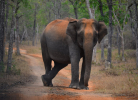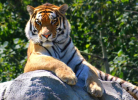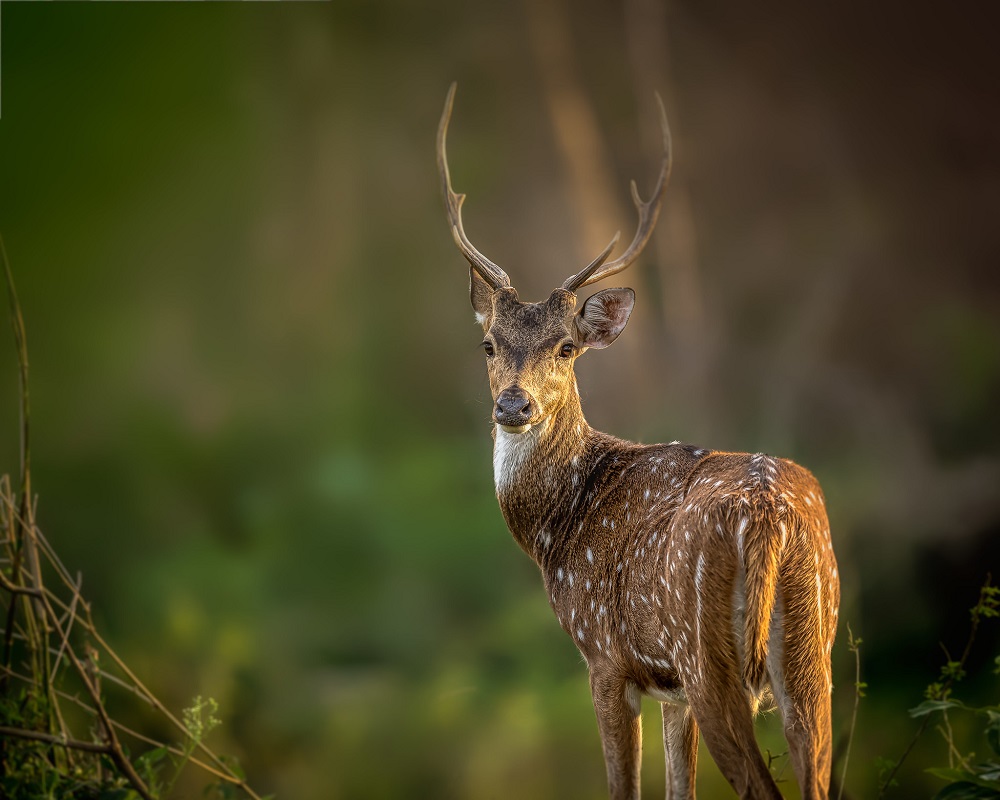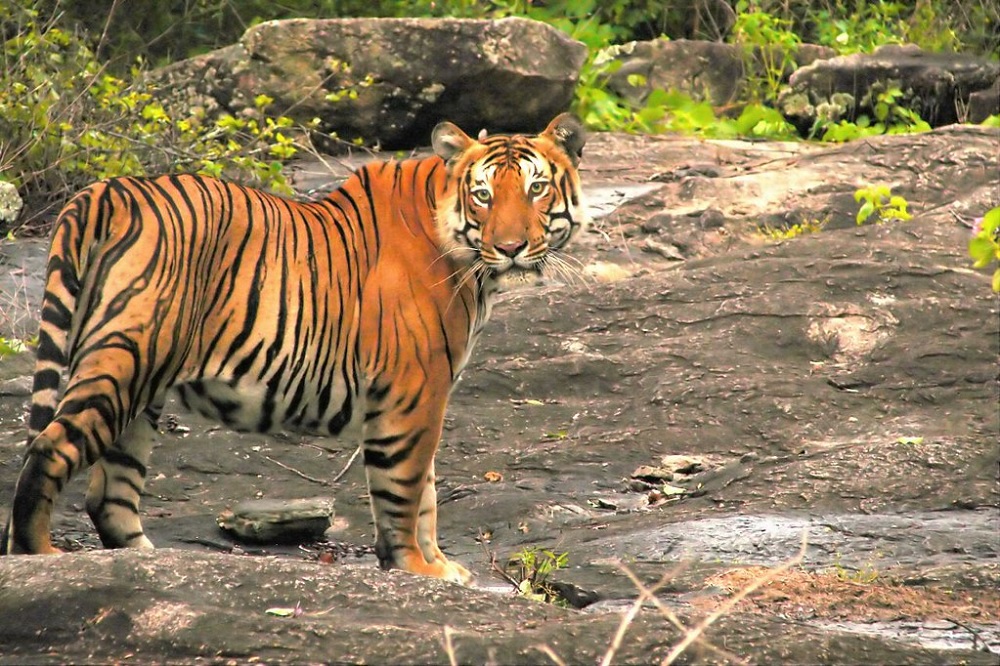Eravikulam National Park
Eravikulam National Park is the first of its kind located in Munnar, Kerala. It is Kerala’s first national park. This park is famous for its collection of tahr. Nilgiri tahr is a goat like species that is endangered. One can easily spot tahr in this park. Some rare animals and endangered species of butterflies can be spotted here. The park is also famous for great view of tea plantation, rolling hills and neelakurunji. Neelakurunji is a blue colored kurunjiflower, which blooms once in 12 years. During the summer season, the valleys will be covered with blue carpet made of Neelakurunji. The park is also famous for Anamudipeak, which is the highest peak in South India.
The Eravikulam National Park covers 97 square kilometer area along the famous Western Ghats. Munnar wildlife division and the Forest and wildlife division of Kerala run it. The park is a heritage site. The Eravikulam national park’s terrain includes hill plateau, grasslands, sholas, mountain peak, perennial streams that merge with Periyar River or Pamba River, waterfalls and others.
Different Areas in the Park
The park is divided into three regions; core area, buffer area and tourism area. The Rajamali is the tourism area in this park. Core and buffer area are not allowed to the tourists.
Rajamalai : This is an important tourism zone of the park. This mountain slope is the best place to spot tahr from close quarters. The zone will be closed during February and March due to mating season. Spotting neelakurunji flower is easy in Rajamalai. A few mini buses operate in this zone. Private vehicles are not allowed. Walking tours are permitted here.
Lakkom Waterfalls : This waterfall starts inside the park and ends in PambaRiver. It is a core region of the park where wildlife thrive. The view is enchanting too.
Anamudi : The peak and slopes are restricted to tourists. Trekking to the foot of the hill is an important activity here.
Flora of Eravikulam National Park
The terrain inside the park can be broadly classified as grasslands, forests and shrublands. The terrains above an altitude of 2000m are predominantly grasslands. The forests are filled with hollow landforms. Deep valleys have thick forests here. Shrublandsare found along the base of the mountain cliffs.
In the grasslands, many species of orchids and balsams can be found. The almost extinct Brachycorythiswightiiis also found in this area. Other top species to spot are Neelakurunji, cyanotis species and others.
Fauna of Eravikulam National Park
There are just 26 species of mammals inside the park including the Nilgiritahr, which has the largest population here. There are more than 750 tahr here. Other mammals to spot are sambar deer, jungle cat, wild dog, leopard, tiger, golden jackal and others. Top small animals to spot are Nilgiri langur, Indian porcupine, Nilgiri marten, ruddy mongoose, dusky palm squirrel, small clawed otter and others. Elephants are spotted in this park during certain seasons.
More than 132 bird species are found here. Top birds to spot are black and orange flycatcher, Nilgiri wood pigeon, Nilgiri flycatcher, white bellied shortwing, Nilgiri pipit and others.
More than 101 species of butterflies are found here including red disk bushbrown, Palni four wing and others. There are 19 different species of amphibians here and a new species of frog is identified in the peak of Anamudi. The largest moth in the world, Atlas moth is found in this park.
Best Time to Visit Eravikulam National Park
Eravikulam national park has a typical tropical montane climate. The peak area gains heavy rainfall than other parts of the park.
Summer: March to May is the summer season in this region. April and May are the hottest month here. During this season, the rivers dry up into puddles of water and attract numerous species of birds for mating. The summer season is also the best time to spot animals with their cubs that come to the water source to quench their thirst.
Monsoon: The place receives rainfall due to southwestern monsoon. Thus, June to August are the wettest months. The place receives high level of rainfall due to the altitude. The rain causes muddy and slippery trails. This makes walking safari harder. The flora in the region would be rich during this season but spotting animals becomes harder. During peak rainy season, the park will be remained closed.
Winter: Winter starts in October and ends by February. During the peak winter season (January) spotting animals is harder. The early and late winter season are good times to get a glance at tahr with their small ones.
Best Season to Visit Eravikulam National Park
The best time to visit the park is from September to November and from April to June. The park will be closed during heavy rains. Do not visit during February and March as spotting animals is very hard due to matting season. Sometimes, the park might be closed during this period to avoid exploitation.
Wildlife Safari in Eravikulam National Park
Private vehicles are not allowed inside the park. The only way to scale the whole park is on foot. The only motorable road available through the park is found in the southern part of the park, which leads to tea estates and LakkomMauduvakudy. The deeper parts of the park should be trailed on foot. Entry fee for Indians is INR 15 and for foreigners, it is INR 200. Children below the age of 12 are charged INR 5. Camera charge is INR 25.
Safari and entry to certain regions inside the park might be restricted during certain season. This might be due to extreme weather condition, epidemics, natural calamities and others. Please obey the rules imposed by the authorities for your own safety. Vehicles can travel up to a few meters inside the park and beyond which a checkpoint stops the vehicle. Safari tickets can be booked online. A specific number of tickets are only sold per day to maintain the environment. Trekking trails stretches for 1.5 to 2 km and it would take around three hours to complete the train. The Kurunji trail is the best of all and pre-booking is essential.
Wildlife Safari Timings
The park is open throughout the week. The safari time starts by 8:30 am and closes by 4 pm. A complete safari would take 2-3 hours.
How to Reach Eravikulam National Park
The nearest international airports are located in Trivandrum and Coimbatore. The Trivandrum airport is located 148 km away from the park and Coimbatore airport is located 175 km away. From the airport, many other transportation options are available to reach Munnar.
The nearest railway station is located 120 km away from Munnar. The railway station is located in Aluva. Many trains from the neighboring states and cities reach Aluva. From railway station, one can hire cab or other transportation to reach the park.
The Eravikulam national park is located 15 km away from Munnar. Cabs can be hired from Munnar to reach the park. Government and private buses are available to reach Munnar and from Munnar, hiring cab is easier.
Distance between major cities and Eravikulam National Park
- Aluva and Eravikulam national park – 109 km
- Angamali and Eravikulam national park – 108 km
- Madurai and Eravikulam national park – 142 km
- Cochin and Eravikulam national park – 150 km
- Kottayam and Eravikulam national park – 148 km
- Munnar and Eravikulam national park – 8 km
- Kanyakumari and Eravikulam national park – 373 km
- Ooty and Eravikulam national park – 234 km
Best Places to Stay near Eravikulam National Park
No hotels or resorts are available inside the park.
- Spice Jungle Resort, Munnar
- Bamboodale resort, Munnar
- Forest Glade, Pallivasal
- Nature zone resort, Pallivasal
- Issacs residency, Munnar
- Athens cottage, Munnar
- Camelot resort, Munnar
- Red sparrow, Munnar
- Tea harvestor, Munnar
Conservation History of Eravikulam National Park
Indian kings. After British rule, the area make under the control of Kanan Devan Hill Produce Company for tea plantation. Nilgiri tahr was common in this area before their endangerment.
Later, it came under the control of Kerala government with regards to Resumption of Lands act of 1971. The reserve was named as Eravikulam Rajamalai wildlife sanctuary in 1975 to conserve Nilgiritahr, which is endangered. It became a national park in 1978.
















